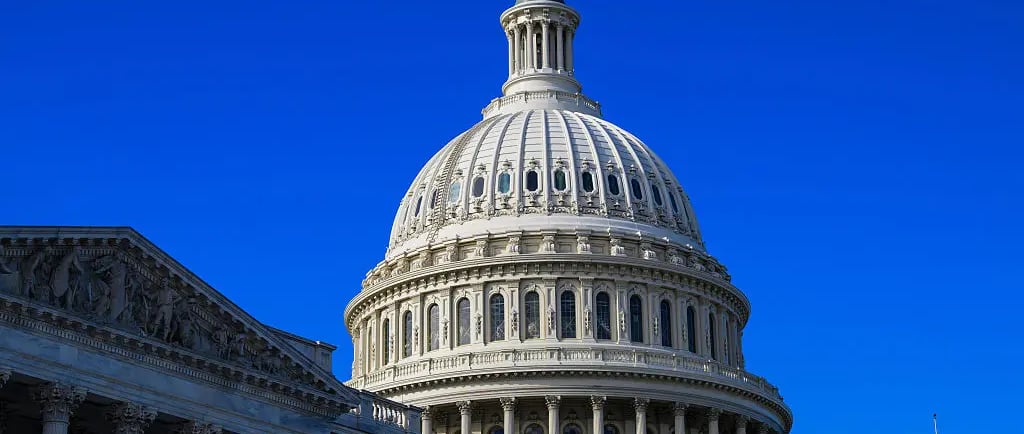United States: The Impact of the Five-Week Federal Freeze on Contractors and Markets
The United States has entered the sixth week of a partial federal government shutdown, breaking the record for the longest in the nation’s history. Its effects have spread far beyond Washington, hitting small businesses, disrupting supply chains, and creating uncertainty for the Federal Reserve. What makes the current crisis fundamentally different from previous ones, and what are its long-term costs for the economy?
UNITED STATES
Ekaterina Romanenko
11/6/20255 min read


Since October 1, 2025, the United States federal government has been in a state of partial shutdown. As of today, this paralysis has reached a historic milestone, marking the longest shutdown in the nation's history after surpassing the 36-day mark.
A congressional stalemate caused by the lack of a budget agreement has paralyzed numerous government agencies. According to various reports, between 700,000 and 900,000 federal employees have either been furloughed or are working without pay. This has created a domino effect felt far beyond Washington
The wave of consequences from the shutdown has primarily hit federal contractors, from defense industry giants to small IT companies whose business depends heavily on government contracts. With the funding lapse, many have faced stop-work orders, frozen negotiations on new contracts, and payment delays for work already completed.
For example, L3Harris Technologies stated that it is already seeing impacts to cash flow and delays in the timing of contract awards. As its CEO, Chris Kubasik, said, the company is "stuck between those two situations":
"There’s clearly an incongruency within the government. The DoD wants to go fast… They meet with us all the time, [telling us] we’ve got to go quicker, and then Congress can’t fund the DoD."
But while the shutdown is more of an unfortunate nuisance for industry giants with their financial cushions and diversified portfolios, for small and medium-sized businesses, it represents an existential threat. According to the National Defense Industrial Association, most of its members are small enterprises with limited cash flow, unable to sustain operations without payment for long. For them, a loss of income for even a few weeks could lead to a cash flow crisis, the loss of skilled employees, and even bankruptcy.
The Professional Services Council calculated that at least one million employees of contracting companies nationwide face the risk of losing their pay, and unlike federal employees, they have no guarantee of back pay after the shutdown ends. The U.S. Chamber of Commerce estimates that each week of the shutdown puts approximately $3 billion in payments to small businesses at risk.
Financial markets have so far shown surprising resilience. Unlike previous shutdowns that caused sharp spikes in volatility, the current situation has not triggered panic. However, as the shutdown drags on, investors are growing uneasy. The main problem is an information vacuum.
The suspension of work at agencies like the Bureau of Labor Statistics means delays in the publication of key economic data, including reports on inflation and employment. This leaves the Federal Reserve (the Fed), businesses, and investors without reliable benchmarks. The Fed is effectively flying blind as it tries to make interest rate decisions in a fog of uncertainty. This uncertainty is fueling volatility and driving investors toward safe-haven assets, which is reflected in a strengthening U.S. dollar and rising demand for gold.
For ordinary Americans, the consequences of the shutdown are also more than tangible. For instance, since November 1, the Supplemental Nutrition Assistance Program (SNAP) has been suspended, leaving over 40 million people without food stamps. This has forced states like Vermont and New York to prepare emergency plans to provide support for those in need using their own funds.
Military personnel are also at risk. Although their October paychecks were disbursed, the risk of a pay delay by November 15 remains.
Civil aviation is also nearing a breaking point. Air traffic controllers and Transportation Security Administration employees are working without pay, leading to a surge in sick calls. This has already caused significant delays at major airports, and Secretary of Transportation Sean Duffy has warned that if the situation worsens, it may be necessary to close certain sections of U.S. airspace due to the inability to guarantee flight safety.
Of course, the shutdown’s consequences extend far beyond the domestic market. Internationally, it has dealt a blow to the reputation of the United States. The political paralysis in Washington projects instability and undermines confidence among allies and investors.
Specific consequences are already apparent in international trade. The Bureau of Industry and Security (BIS) at the Department of Commerce has stopped processing applications for export licenses, except in emergency cases related to national security. This creates serious problems for American high-tech companies and their foreign partners. The State Department's Directorate of Defense Trade Controls is also operating with a reduced staff, which delays the approval of defense contracts.
Although essential functions like tariff collection and cargo inspection at the border are continuing, the payment of customs duties and refunds has been suspended, which hurts importers. In the long term, recurring budget crises cast doubt on the ability of the American political system to effectively manage the world's largest economy, compelling international investors and partners to seek ways to diversify their risks.
The current crisis is often compared to the 35-day shutdown of 2018–2019, which the Congressional Budget Office (CBO) estimated caused $3 billion in permanent economic losses. However, the current situation is far more dangerous.
First, the scale of government paralysis is fundamentally different. The 2018–2019 shutdown was genuinely partial. By the time it began, Congress had already passed five of the twelve appropriations bills, ensuring funding for about 75% of federal agencies. These included key entities like the Department of Defense, the Department of Labor, and the Department of Health and Human Services. That created an economic buffer, as the Pentagon, the largest government customer, and its multi-billion dollar supply chain continued to operate normally. In the current crisis, Congress has failed to pass any of the twelve budget bills, leading to a much more total funding lapse. For the first time in a long while, the threat of delayed pay hangs over not only civilian employees but also 1.3 million active-duty military personnel.
Second, the economic backdrop is fundamentally different. In early 2019, the U.S. economy was in a phase of steady growth with low inflation. Consumer confidence was high, and the Federal Reserve had room to maneuver. Today's situation is unfolding amid a fight against inflationary pressures. In such fragile conditions, the shutdown acts as a powerful negative shock.
On one hand, it hits aggregate demand as hundreds of thousands of families lose their income and drastically cut spending. On the other hand, it creates supply-side problems by paralyzing regulators, delaying permits, and disrupting supply chains. Moreover, the suspension of work at agencies like the Bureau of Labor Statistics and the Bureau of Economic Analysis, as mentioned earlier, only exacerbates the situation. Without their key reports on inflation and employment, the central bank is forced to make interest rate decisions in an 'information fog,' which greatly increases the risk of a policy error that could push the economy into recession.
According to CBO forecasts, the current crisis, if it lasts for eight weeks, could cost the economy $14 billion in permanent losses and reduce fourth-quarter GDP growth by 2 percentage points. This reflects the fact that the blow has landed on a much wider range of sectors at a time when the economy has almost no safety margin. While the 2019 shutdown was a serious but largely localized problem, the 2025 shutdown risks becoming the very trigger that provokes a full-scale economic downturn.
In a situation where the economy is losing billions and millions of citizens are facing hardship, it is difficult to speak of any direct beneficiaries. The shutdown becomes a tool of maximum pressure that both Republicans and Democrats use to achieve their political goals.
Each side hopes that the growing social and economic damage will force its opponent to make concessions on matters of principle, whether it be healthcare subsidies or government spending cuts. However, the price of this political standoff is proving to be excessively high. The freeze on IT modernization and cybersecurity is making government systems more vulnerable. An exodus of skilled personnel unwilling to tolerate the instability is undermining the long-term potential of the civil service.
Thus, the current budget crisis extends beyond a typical dispute and becomes a reflection of systemic difficulties in reaching political compromise in the modern United States.


